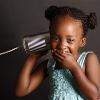Problem-solving

Children often use toys and materials in unexpected and creative ways. A basket can be a hat, a cup can be a boat and a block can make a great telephone. Seeing your child play in these ways, is a sign that your child is learning to use their thinking skills and solve problems.
Even very young children can make discoveries on their own. Try not to rush in when your child is looking for teddy, or when they are finding it hard to build a brick tower on their own. Give them time to think, and then, if needed, give a little help or encouragement. By not rushing in and solving young children's day-to-day problems, you can help them to develop confidence and increase thinking ability.
'Free and found' ideas
'Free and found' is a term for things like food packaging, shells, pine cones, cotton reels, kitchen roll tubes, sticks and used tickets.
Nursery staff, childminders and teachers use these resources all the time to encourage creativity and problem solving. If you want to do this at home, you should always check that items are clean, and look out for loose pieces and sharp edges before use. You could:
- Use shells for play money and empty boxes for a pretend shop. This can lead to number and other mathematical thoughts such as, 'how many shells does this cost?', 'would you like the big packet?', 'can you pass me the red box, it's behind the pine cones?'
- Try making a bridge for your train track, a garage for your cars or a barn for your animals, out of empty shoe boxes or cereal packets. This can lead to lots of problem-solving ideas and questions, for example, 'how do I make a door?', 'this barn is fine for the little animals, but what about somewhere for my big teddy?'
- Gather interesting things on a walk, for example, leaves, sticks, shells, daisies and dandelions. Your child might enjoy talking with you about the things that you find, and will probably ask questions. At some point, you will probably have to talk about the things that you would prefer not to bring home, such as a dead bird, and the things that you shouldn't bring home, such as next door's cat or flowers in a neighbour's garden!





